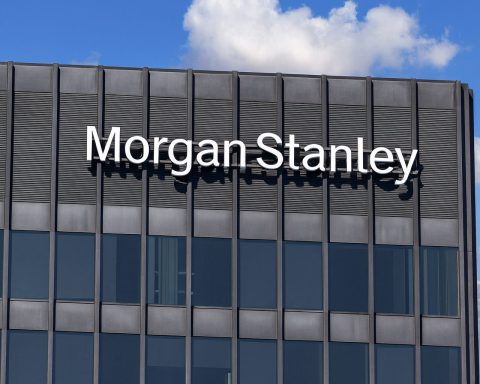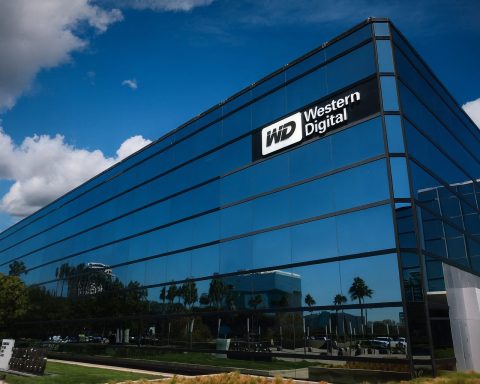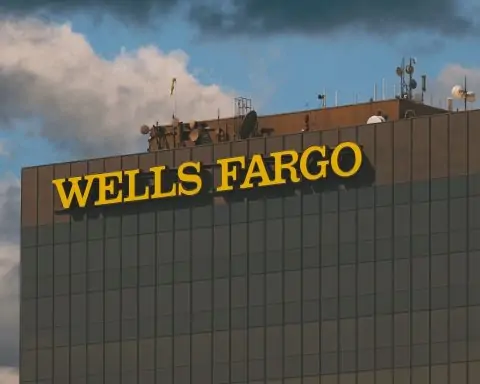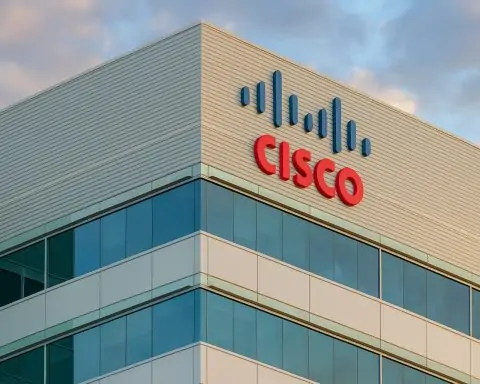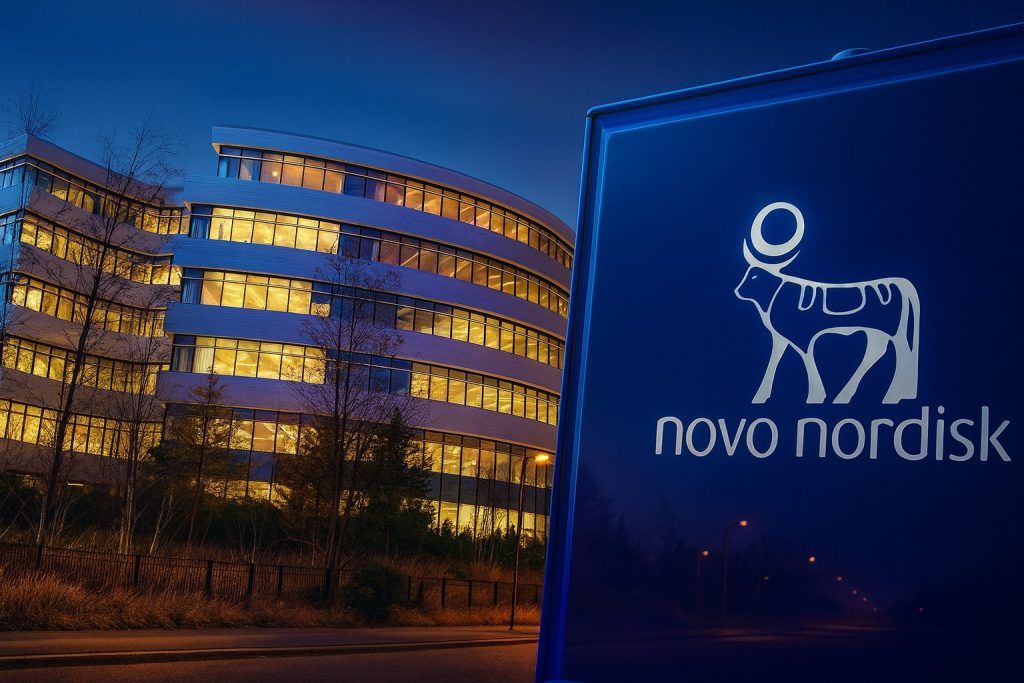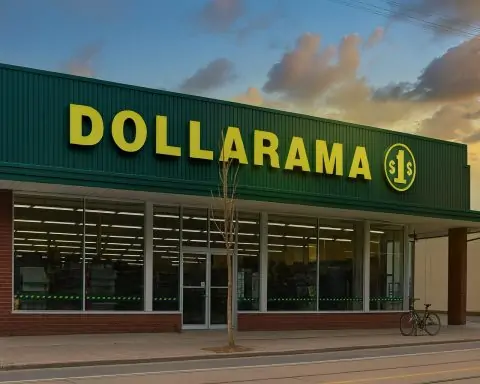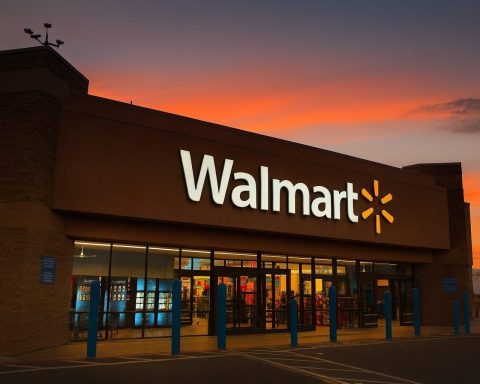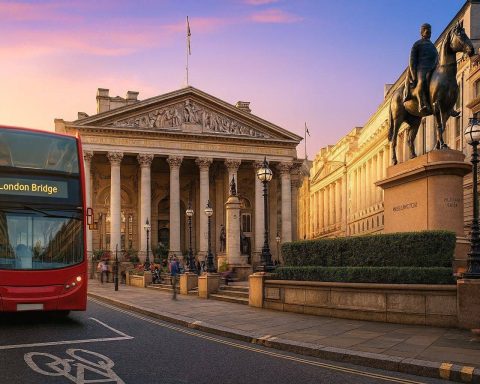- Americans are on track to spend $13.1 billion on Halloween in 2025 – a new record (up from $11.6B in 2024) – with costumes ($4.3B), decorations ($4.2B) and candy ($3.9B) leading the way [1] [2].
- Despite economic worries (79% of shoppers expect higher prices due to tariffs [3]), three-quarters of consumers still plan to celebrate – carving pumpkins, dressing up, trick-or-treating – essentially treating Halloween “like a miniature version of the winter holiday season” [4] [5]. Parents are especially indulgent, averaging ~$445 each on Halloween (vs. $193 for non-parents) [6].
- Discount stores and dollar shops are big winners. 42% of shoppers say they’ll buy Halloween items there (up from 37% last year) [7]. Retail analysts note that bargain-hunting moms are posting “dollar store haul” videos online, driving a viral “little treat” economy [8] [9]. As Kearney’s Katie Thomas explains, saving on candy or decorations allows buyers a “small, fun indulgence” even in a tight budget [10].
- The candy industry is under strain. Executives report that health- and budget-conscious consumers are trading down. Zolli Candy CEO Alina Morse observes “Adults are looking for functional hard candies, with zero sugar, mint, and fruit flavors” [11], and Perfetti’s Chris Borges warns that consumers “have taken a step back…larger sizes are fading away” due to price sensitivity [12]. Recent defaults (online retailer CandyWarehouse and party-supply giant Party City both filed Chapter 11 in late Oct. 2025 [13]) highlight these headwinds.
- Halloween entertainment and tourism are booming. Haunted attractions (haunted houses, trails, escape games, etc.) now generate roughly $500+ million each season, and a growing share of customers travel from out of town – Amber Arnett Bequeaith of America Haunts notes that “more than 30% of ticket sales at the top attractions… come from travelers” [14]. Small cities with big haunts are seeing huge jumps in hotel bookings: for example, Utica–Rome, NY saw a +475% year-over-year spike in Halloween travel in 2025 [15], as visitors seek local festivals and immersive spooky getaways beyond traditional big-city events [16] [17].
- Tech and marketing trends: Social media, AR and AI are transforming Halloween. Perfect Corp reports that in Halloween week 2024 there were 176,000+ “digital Halloween” looks tried on in its YouCam apps, and 13,000 of those were saved and shared [18] [19]. Digital costumes (AR/AI filters turning users into ghosts, witches, vampires) are now a viral phenomenon on TikTok and Instagram. Retailers and influencers are also jumping in – for example, Home Depot’s viral 12-foot “Skelly” skeleton (introduced in 2020) spawned a social-media craze and copycats [20]. Seasonal marketing campaigns are more experiential than ever, from Summerween promotions in June to interactive store displays.
Below we unpack these developments in detail, citing industry experts, recent news, and the latest data on retail performance, consumer behavior, and cultural trends in the Halloween 2025 season.
Record Spending Across Retail Categories
The National Retail Federation’s 2025 consumer survey (conducted by Prosper Insights) confirms record spending this Halloween. Total consumer spending is projected at $13.1 billion [21] – a 13% jump over 2024 and the highest ever. Costs per household have climbed too: the average spender anticipates $114.45 this year (up nearly $11 from 2024) [22]. The breakdown of categories shows broad growth: consumers will spend an estimated $4.3B on costumes, $4.2B on decorations and $3.9B on candy [23]. (Even greeting cards and themed tableware see gains – ~$700M total.)
Katherine Cullen of NRF observes that higher prices and tariffs are top of mind for shoppers [24] [25]. Nearly 80% say they expect prices to rise. Yet holiday participation remains strong: 73% plan to celebrate (roughly the same as last year) [26], with many seeing Halloween as an inexpensive tradition worth preserving. As Cullen notes, during economic uncertainty “consumers were really focusing on holidays and traditions as a way to remind you what matters… Halloween has a little bit of a fantastical element… It’s a healthy way to distract yourself from what’s going on and connect with others.” [27].
This resilience is reflected in purchasing trends. Consumers are starting early to avoid last-minute price hikes – about 49% began shopping in September or earlier [28]. Retailers and brands have responded by launching seasonal items sooner (the “Summerween” phenomenon) and offering promotions through September. The NRF found that despite budget concerns, families and enthusiasts intend to spare no fun – as one analyst puts it, “hurricanes haven’t taken Halloween out of the forecast”. Moreover, budgets are concentrated on experiences that create memories: pumpkin carving, costumes, and yard displays top the list of activities [29] [30].
Where Consumers Shop: Discount Chains, Home Goods, and DIY
One clear shift in 2025 is where people are buying their Halloween gear. Traditional party/costume stores are fading (recently Party City/Halloween City declared bankruptcy), while discount and off-price retailers are surging. NRF data shows 42% of Halloween shoppers will hit discount stores or dollar chains (up from 37% last year) [31]. Katherine Cullen remarks this is “the highest we’ve seen since the pandemic started” for discount-store share. The reason is obvious: savvy consumers want to stretch their dollars, especially on candy, decor and simple costumes. Even Katie Thomas of the Kearney Consumer Institute notes that discounters’ value proposition (and the “treasure-hunt” thrill at stores like HomeGoods or TJ Maxx) makes them a go-to for Halloween essentials [32] [33].
Social media magnifies this trend. Retail Dive reports that mom influencers are posting their Halloween “dollar store hauls” – finding decorations, costumes, and treats on a dime – and other parents eagerly follow suit [34]. As Cullen explains, “People will post, ‘This is what I found at the dollar store. It’s my dollar store haul.’ A lot of it is driven by moms… talking about what they found for their kids… and how they were able to save money there.” [35]. These Instagram/TikTok posts effectively advertise that dollar-store Halloween shopping is not only frugal but fun.
At the same time, home improvement and decor retailers are capitalizing on the demand for big, eye-catching displays. Home Depot became synonymous with Halloween decor after its 2020 introduction of “Skelly”, a 12-foot skeleton that sold out instantly [36]. Aubrey Horowitz of Home Depot recounts how Skelly’s “massive size and haunting eyes left a huge impression” on shoppers, and the retailer has since expanded its holiday assortment each year to include skeleton dogs, cat figures, inflatables and more. This year, 14% of consumers say they’ll shop home-improvement stores for Halloween (vs. 9% in 2024), and 21% will shop home-decor chains (vs. 13%) [37]. Such growth is driven by home-decor enthusiasts and “enthusiasts [who] go all out with their displays” – keeping up setups even beyond October [38]. Indeed, 78% of shoppers plan to buy decorations this year (up from 75%) [39], from string lights and cobwebs to pumpkins, faux tombstones and animatronic yard props. As Cullen aptly puts it, “Halloween decorations seem to be just a bright spot for the holiday” [40].
Meanwhile, thrift and craft stores are seeing gains as well. With rising costs, many consumers opt to DIY costumes. A survey by Goodwill International shows 62% of adults making their own costumes will shop at thrift stores (up from 53% last year) [41], and craft/fabric retailers have noted double-digit increases in Halloween shoppers as families get crafty. These shoppers cut costs and embrace sustainability – upcycling, borrowing, or renting costumes rather than buying new. Even greeting-card spending and flower-supply segments tailor Halloween offerings (e.g. pumpkin arranging at craft stores, spooky card lines), broadening the festival’s reach into niche retail categories.
Candy and Costumes: Industry Performance and Trends
Candy remains the most ubiquitous symbol of Halloween, but the candy industry’s economics have shifted. According to NRF, total candy spending is expected to hit $3.9 billion in 2025 [42], but that masks some distress. Niche retailers like CandyWarehouse (which specialized in bulk candy sales) and major party-supply retailer Party City both filed for Chapter 11 in late October 2025 [43], underscoring how rising ingredient costs and changing tastes are squeezing margins. Analysts note cocoa prices soared ~178% in 2024 (due to African harvest shortfalls), forcing chocolatiers to hike pack prices (Hershey’s variety packs +22% last year [44]). In this environment, many shoppers are trading down.
Experts say consumers want “functional” or healthier treats now. Alina Morse of Zolli Candy observes that buyers seek candies with nutrition, vitamins or sugar alternatives – “Adults are looking for functional hard candies, with zero sugar, mint, and fruit flavors” [45]. Similarly, Perfetti Van Melle’s Chris Borges reports shoppers “have taken a step back,” favoring smaller packs and resisting price hikes [46]. A recent study even found 47% of shoppers seek “healthy” Halloween candy to limit sugar intake. Many customers are substituting chocolate with gummies or vitamin-laced candies. In short, traditional Halloween indulgences are being reevaluated: candies are lighter, packages are smaller, and some spend is shifting to alternative treats (like organic snacks or non-food treats for trick-or-treaters).
Costume trends also reflect cultural shifts. According to NRF, 71% of consumers will buy costumes (spending ~$4.3B total) [47]. Children’s costumes remain king, with superheroes and movie/TV characters topping the list (Spider-Man #1 for 2.3M kids, followed by princesses at 1.9M [48]). But adult costume play is evolving too: popular choices include not only classic horror icons but also social-media-inspired looks. As noted by PwC’s survey, Gen Z is driving creativity; 70% of Gen Z plan to shop online for Halloween (vs ~50% of all shoppers) [49], and 14% of Gen Z intend to hand out non-candy or “healthier” treats [50] [51]. This has led to a proliferation of digital costume tools (see below) and a focus on shareable, visually striking outfits.
One marketing story worth noting is Home Depot’s savvy with “Skelly” and viral decor. The skeleton’s runaway success in 2020 (it flew off shelves [52]) showed how one hit product can define a season. Since then, Home Depot and competitors like Walmart and Target have competed to offer the biggest or most novel animatronics and yard ornaments. Even offbeat brands have entered: Microsoft partnered with Halloween outlets on new horror games, and beverage makers (like Baileys and Walkers crisps) launched Halloween-themed flavors/campaigns. These marketing tie-ins underscore Halloween’s broad cultural impact – it’s no longer just for kids, but a festival that even tech companies and luxury brands tap into for seasonal hype.
Haunted Attractions and “Scare-Cations”
Halloween is no longer confined to October 31st or trick-or-treating alone. The rise of immersive haunted experiences has made the season a months-long phenomenon. Theme parks like Universal, Six Flags and Disney have been extending their Halloween seasons into late summer (see Reuters analysis [53]), rolling out elaborate Halloween Horror Nights, Fright Fests and Nightmare Before Christmas events. Danielle Broadway of Reuters reports that these parks saw “attendance gains and increases in guest spending in 2023” by adding horror-themed attractions, and Six Flags’ CMO notes Halloween has become a “billion-dollar industry” for parks [54]. Disney Orlando’s Oogie Boogie Bash sold out in just 11 days when moved up by a week [55], and Universal is featuring new IP-based haunted houses (e.g. Ghostbusters and Chainsaw Man in 2025) [56]. Globally, parks from Florida to Hong Kong are introducing Nightmare Before Christmas parades and villain-themed parties to lure families year-round.
Beyond big parks, independent haunted attractions have also grown spectacularly. According to America Haunts, a national association of haunted houses, the industry now drives over $500 million in tourism spend each season [57]. Amber Arnett Bequeaith of America Haunts notes that travelers are building entire weekend trips around “legendary” haunts – renting hotels, dining out, and sharing Instagram-worthy scares. In fact, many destinations now market Halloween like ski season: local businesses in cities like Detroit (Erebus haunted house) and San Diego (Balboa Park’s Haunted Trail) see a clear tourism boost every Fall [58]. These “scare-cations” are particularly popular with young adults and horror fans. The PR Newswire report highlights 5 top haunt destinations of 2025 (e.g. Dent Schoolhouse in Ohio, Erebus in Michigan, Nightmare on 13th in Utah) as must-see horror pilgrimages [59] [60].
Significantly, the horror-entertainment trend is attracting out-of-state crowds: more than 30% of tickets at top haunted attractions are sold to non-local visitors [61]. Travel analytics confirm this: Adara’s Halloween 2025 travel report shows huge YOY increases in hotel stays for smaller U.S. destinations. For example, Utica-Rome, NY bookings spiked +475% vs. 2024, Rochester, NY +174%, Albany, GA +131%, and numerous others saw 50–100% jumps [62]. These are towns that host local Halloween festivals, haunted trails, or quirky events that, until recently, flew under the radar. Adara concludes that tourists are “seeking unique cultural experiences” and “celebrating through local festivals, haunted attractions, and community-centered events across smaller U.S. destinations [63].” In short, Halloween tourism has spread from big cities to small-town Americana.
Consumer Behavior and Cultural Shifts
Several consumer behavior patterns stand out this year. PwC’s 2025 Halloween consumer survey (released mid-Oct) found that 78% of U.S. adults still plan to celebrate Halloween, despite inflation and economic fatigue [64]. Shoppers are treating it like “calculated indulgence” – they’ll look for deals and prioritize their spending, but not cut out the holiday entirely. In fact, by October, 34% of consumers had already spent at least half of their Halloween budget [65], and 28% started shopping unusually early (July–August) to avoid stockouts and high prices [66]. This “Halloween gets earlier—and smarter” trend means retailers that launched seasonal items in summer reaped the rewards.
Generation differences are noteworthy. Parents emerge as the biggest spenders (the $445 figure) [67]: they’re buying costumes for kids, hosting parties, decorating homes, etc. In contrast, Gen Z (and younger Millennials) drive new trends in treats and tech. About 70% of Gen Z plan to shop online for Halloween this year [68], and many are health-conscious: ~14% of Gen Z (and 13% of parents) plan to hand out healthier or non-candy snacks [69] [70]. PwC calls this the “Make America Healthy Again” Halloween vibe: organic fruit chews, allergen-free cookies and toy prizes are replacing some candy on porches. It reflects a broader cultural shift where wellness and sustainability have crept into even spooky traditions [71].
Another cultural trend is the social/nostalgia factor. Halloween remains a communal, feel-good holiday. Katherine Cullen and others note that even in tough times, families cling to Halloween for joy and connection [72]. The decorations and costumes are both creative outlets and social experiences. Retailers have leveraged this by creating shareable moments: photo-op props in-store, viral merchandise (like the skeleton dog and cat pictured at Home Depot), and contests (Best Yard Display, etc.). Many families now spend the entire season on Halloween rituals: visiting pumpkin patches, wearing new costumes at school functions, attending themed parties, and posting it all online. As one Kearney analyst summed up, holidays are “where people try not to cut back… Cutting back [on Halloween] feels like cutting back on joy” [73].
Marketing & Tech Innovations
Halloween marketing in 2025 is a blend of high-tech and high-touch. Brands are embracing augmented reality (AR) and AI in creative ways. One highlight: Perfect Corp’s YouCam reported that consumers made over 176,000 virtual Halloween looks with AR filters during Halloween week 2024, saving 13,000 of them for social sharing [74] [75]. This demonstrates how digital costumes and makeup – turning a selfie into a ghost, vampire or sci-fi creature – have become part of the holiday festivities. Marketing teams from cosmetics to gaming have launched themed AR filters on Snapchat/Instagram, inviting users to “try on” spooky faces and share them online. Nasdaq notes that consumers are now “choosing virtual costumes and AR-powered transformations… alongside, or even instead of, traditional dress-up.” [76].
AI is also making headway. Some companies (e.g. newsletters) are touting “AI Halloween Agents” and smart home devices that guide trick-or-treaters through safe routes, or use generative AI to produce personalized scare videos. Voice assistant brands have released ghostly narratives for smart speakers to tell scary stories. The result: the boundary between physical and digital Halloween is blurring, especially for younger consumers.
Social campaigns continue to be crucial. Influencers (especially “mom bloggers”) are heavily featured in Halloween marketing. Retail Dive reports parents love to share “hauls” and DIY tips online [77], and brands amplify this by encouraging user-generated content. Examples include Target’s Halloween challenges on TikTok, or limited-edition candy launched via Instagram polls. Community trends like #HauntedYard or #HalloweenDIY have substantial traction; indeed, 2025 saw more interactive contests (best costume parade streamed online, virtual haunted-house tours) than ever.
Finally, we note sustainability buzzwords creeping in. Several analysts and bloggers point out that eco-conscious shoppers are in on Halloween too. For instance, some major costume retailers have rentals or secondhand resale programs (CostumeShare, Goodwill partnerships) and biodegradable decorations (compostable pumpkins, paper lanterns). While not yet mainstream, the messaging is there: “Trick or Treat, Go Green!” reads some campaigns. At the very least, the thrifting and DIY trends (62% buying thrifts, 70% hunting for bargains [78]) suggest consumers want to reuse and recycle, softening the holiday’s waste footprint.
Outlook
As Halloween 2025 draws to a close, industry watchers see a mix of ebullience and caution. On one hand, spending and participation are at all-time highs [79] [80], and the season’s events (from haunted houses to theme park nights) are bigger and more elaborate than ever [81] [82]. On the other hand, rising costs – in goods, ingredients and credit – have consumers being choosy. Retailers that offer value or novelty (discount chains, experiential attractions, online exclusives) are winning share, while legacy specialty chains (Party City being the poster child) struggle.
Experts predict that Halloween will continue to expand its footprint in the retail calendar. NRF and PwC analysts note that Halloween now often kicks off by late summer and wraps with year-end holiday prep – effectively creating a “Halloween season” rather than a single day. As a result, marketers are treating it as a multi-month campaign and using it to test new retail ideas. Look for continued tech integration (more AR/VR attractions, NFT-themed collectibles, gamified shopping) and perhaps a moderation of spending if macro conditions worsen.
For consumers, Halloween 2025 will be remembered as a year of record-breaking fun and record-breaking budgets – a celebration of community and creativity even in an economy of caution. As Katherine Cullen says, even with budgets tight, “consumers are committed to prioritizing Halloween celebrations to create special memories with their loved ones.” [83]. And retailers will be watching closely whether that commitment holds, or if consumers’ wallets finally bite back.
Sources: NRF, PwC, Retail Dive, Reuters, Adara, Perfect Corp, Economic Times, TS2 Tech, PR Newswire/AmericaHaunts, and other industry reports from Oct. 2025 and earlier. Each statistic and quote above is cited to its source.
References
1. nrf.com, 2. nrf.com, 3. nrf.com, 4. www.pwc.com, 5. nrf.com, 6. www.pwc.com, 7. www.retaildive.com, 8. www.retaildive.com, 9. www.retaildive.com, 10. www.retaildive.com, 11. economictimes.indiatimes.com, 12. economictimes.indiatimes.com, 13. ts2.tech, 14. www.prnewswire.com, 15. adara.com, 16. www.prnewswire.com, 17. adara.com, 18. www.nasdaq.com, 19. www.nasdaq.com, 20. www.retaildive.com, 21. nrf.com, 22. nrf.com, 23. nrf.com, 24. nrf.com, 25. www.retaildive.com, 26. nrf.com, 27. www.retaildive.com, 28. nrf.com, 29. nrf.com, 30. www.retaildive.com, 31. www.retaildive.com, 32. www.retaildive.com, 33. www.retaildive.com, 34. www.retaildive.com, 35. www.retaildive.com, 36. www.retaildive.com, 37. www.retaildive.com, 38. www.retaildive.com, 39. www.retaildive.com, 40. www.retaildive.com, 41. www.retaildive.com, 42. nrf.com, 43. ts2.tech, 44. economictimes.indiatimes.com, 45. economictimes.indiatimes.com, 46. economictimes.indiatimes.com, 47. nrf.com, 48. nrf.com, 49. www.pwc.com, 50. www.pwc.com, 51. www.pwc.com, 52. www.retaildive.com, 53. www.reuters.com, 54. www.reuters.com, 55. www.reuters.com, 56. www.reuters.com, 57. www.prnewswire.com, 58. www.prnewswire.com, 59. www.prnewswire.com, 60. www.prnewswire.com, 61. www.prnewswire.com, 62. adara.com, 63. adara.com, 64. www.pwc.com, 65. www.pwc.com, 66. www.pwc.com, 67. www.pwc.com, 68. www.pwc.com, 69. www.pwc.com, 70. www.pwc.com, 71. www.pwc.com, 72. www.retaildive.com, 73. www.retaildive.com, 74. www.nasdaq.com, 75. www.nasdaq.com, 76. www.nasdaq.com, 77. www.retaildive.com, 78. www.retaildive.com, 79. nrf.com, 80. www.retaildive.com, 81. www.reuters.com, 82. www.prnewswire.com, 83. nrf.com


